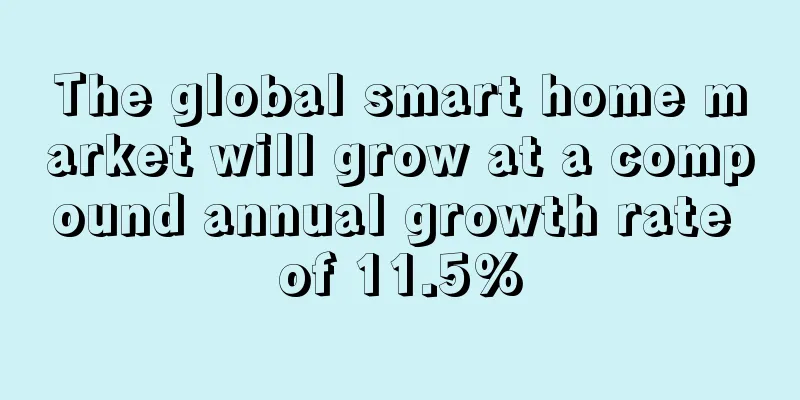The global smart home market will grow at a compound annual growth rate of 11.5%

|
Zion Market Research recently released a report stating: The global smart home device market size was US$68.8 billion in 2020 and is expected to reach US$156.6 billion by 2028, with a compound annual growth rate of 11.5% from 2021 to 2028 .
The report said the growth of the smart home industry is driven by a variety of factors, including the increase in Internet users, the popularity of smart devices, the increase in disposable income in developed economies , and the increasing demand for energy conservation and reduction of carbon emissions.
Due to the impact of the pandemic stay-at-home order , more and more people are staying at home and changing their living environment, thus adopting Internet of Things ( IoT ) technology. Long-term home life has changed the way people interact with their homes at home , causing them to rearrange their living space to meet new functional needs, such as working and studying at home, and discovering new ways to relax and enjoy themselves .
The growing need to save electricity and reduce carbon emissions is driving the smart home device market. Traditional devices consume electricity continuously when turned on . However, smart home devices are equipped with various sensors that can automatically shut down when they sense that the room is empty , saving money and energy.
The report shows that the smart home devices market in Europe accounted for more than 22% share in 2020. This is due to the increasing infrastructure investments in the region. The increase in demand for heating, ventilation, and air conditioning systems and energy management is driving the growth of the European market .
Smart TVs accounted for about 20% of the market in 2020. This is mainly due to the latest innovations in smart TV technology , such as the ability to run applications and operating systems , and consumers can now use smart TVs to search, chat, browse, publish, update, and download content.
Asia Pacific is expected to grow at a CAGR of over 12% during the forecast period . This surge is attributed to the increase in adoption of smart home devices resulting from technological advancements .
Security and access control systems will also grow at a compound annual growth rate of more than 12% . With the global crime rate rising , people are paying more and more attention to safety and security services, especially in residential areas. Home consumers prefer smart home devices such as smart locks, smart cameras, and smart lockers, which are safer and more reliable . Smart Home Internet of Things Smart TV |
>>: Sales of tourism equipment in Russia continue to grow
Recommend
What is wish merchant platform? wish merchant platform Review, Features
Wish Merchant Platform is a cross-border B2C e-co...
What is Harvey Norman? Harvey Norman Review, Features
Harvey Norman is a large-scale retail group origin...
What is Eagle Creek? Eagle Creek Review, Features
Eagle Creek is a global tribe of travelers committ...
Anker sold over 200 million units in its first year! This category is making a lot of money
"No matter when or how the market changes, t...
What is NETCASH? NETCASH Review, Features
NETCASH is a prepaid e-commerce service provided b...
What is Strawberry Bear Off-site Promotion? Strawberry Bear Off-site Promotion Review, Features
Strawberry Bear Off-site Promotion is a one-stop,...
New Zealand's retail sales rise in first quarter
New Zealand's total retail sales rose a seaso...
What is 321design? 321design Review, Features
321design is a complete IT service provider, from ...
The most popular styles of clothing for Southeast Asian women in 2022
Women's clothing has always been a popular ca...
Facing the risk of closure? SHEIN makes an urgent response
In the United States, almost all news about SHEIN...
What is pierrebuy? pierrebuy Review, Features
pierrebuy is a technology-driven cross-border e-co...
Many of the seller's products were removed from Amazon because they were too "exposing"
It is understood that Amazon believes that these ...
What is Uber Travel? Uber Travel Review, Features
Uber Travel, translated into Chinese as "Ube...
UK Amazon workers to strike before Christmas
Hundreds of Amazon workers at their vast warehous...
What is 99 Ranch Market? 99 Ranch Market Review, Features
99 Ranch Market is an Asian American supermarket ...









